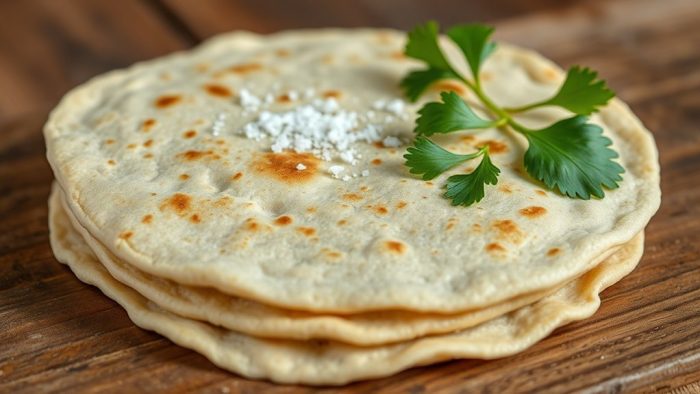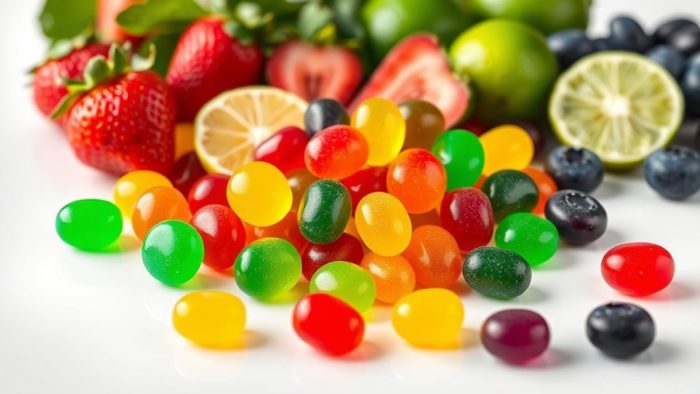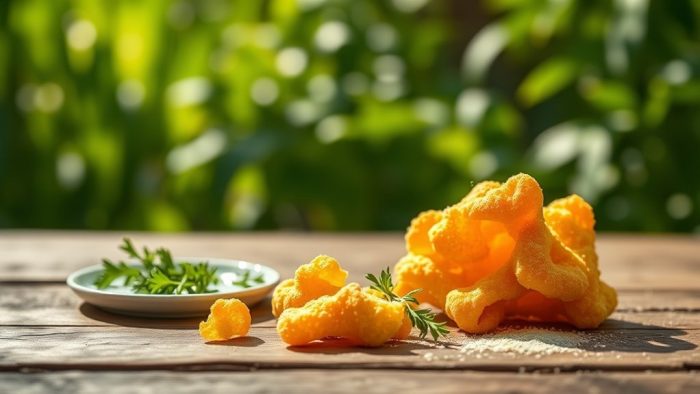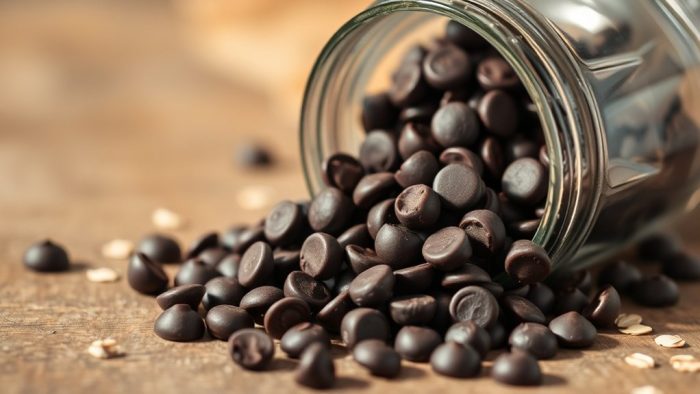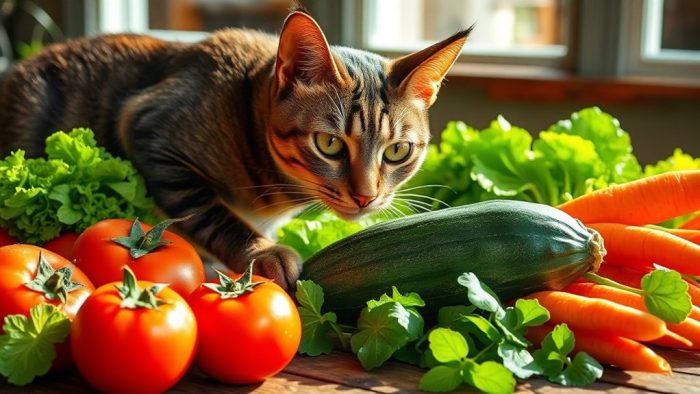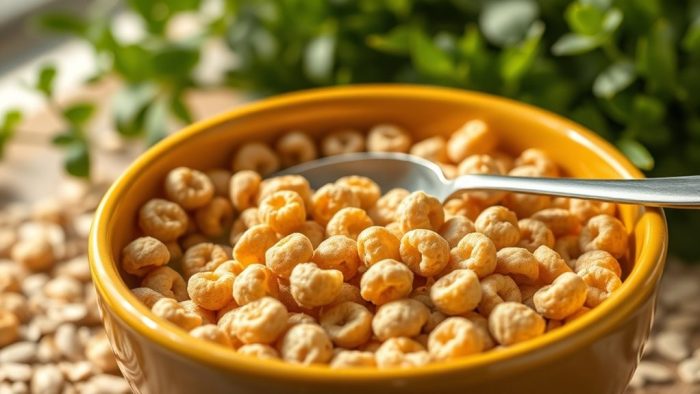Is Xanthan Gum Vegan
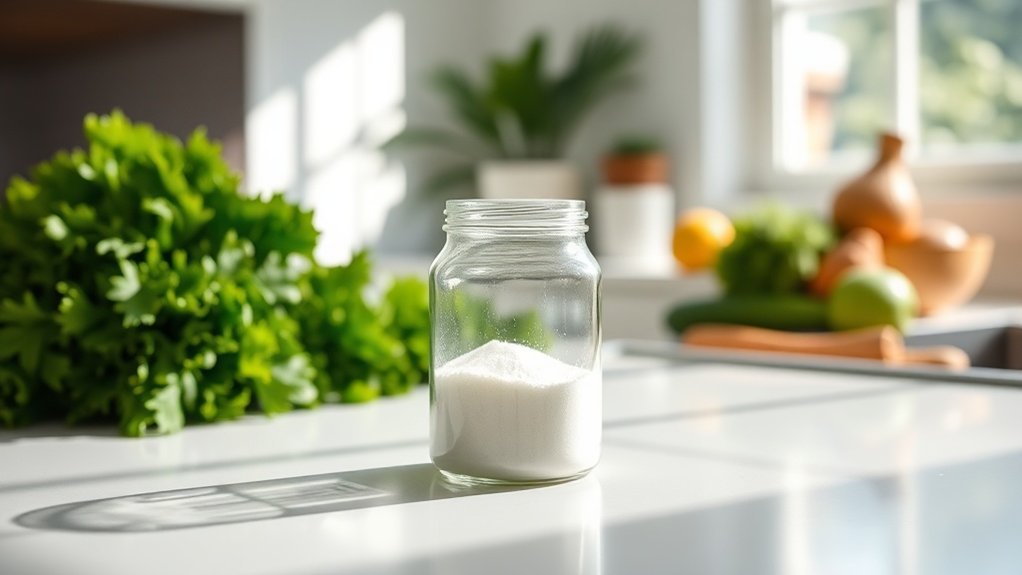
Yes, xanthan gum is vegan. It’s produced through bacterial fermentation of plant-based sugars—typically corn glucose—using *Xanthomonas campestris* bacteria. The FDA confirms no animal-derived substances are used in its manufacturing process, and major organizations like the Vegetarian Resource Group classify it as vegan-friendly. You’ll find it labeled as food additive E415 in products ranging from salad dressings to gluten-free baked goods. While rare cross-contamination with allergens can occur during manufacturing, the ingredient itself remains entirely plant-based. Below, you’ll uncover its production process, health benefits, and ideal usage techniques.
What Is Xanthan Gum and How Is It Produced?
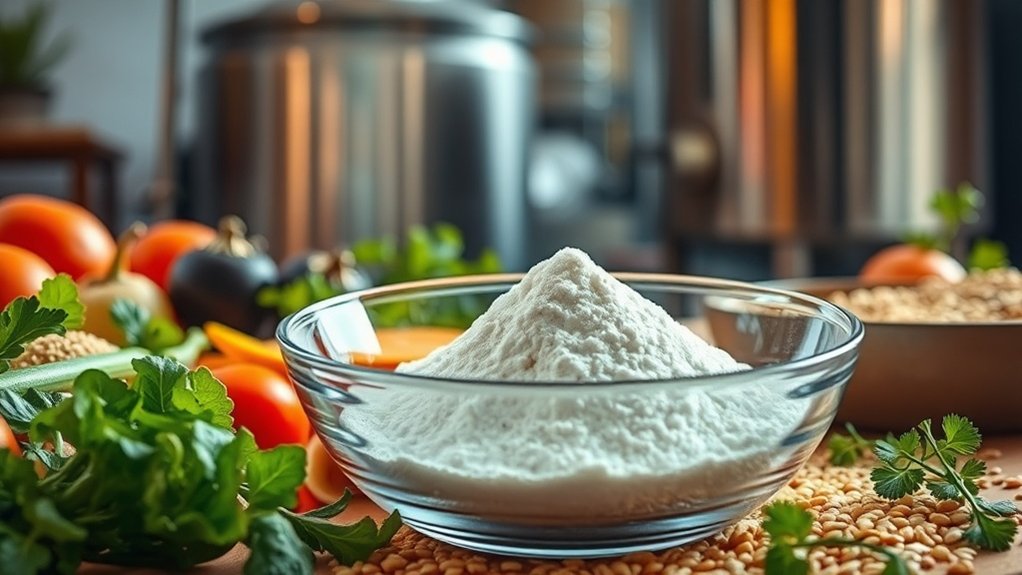
Xanthan gum is a polysaccharide produced through bacterial fermentation of plant-based sugars, most commonly glucose derived from corn.
During production, the bacteria Xanthomonas campestris consumes these sugars and creates a viscous, slimy broth. This fermentation process is how xanthan gum is made commercially.
The manufacturing continues when producers add isopropyl alcohol to the fermented broth, causing the polysaccharide to precipitate and form a solid mass.
They’ll then dry and mill this solid into the fine white powder you’ll find in food products.
As a food additive designated E415, it’s approved for use across the U.S., UK, and Europe.
You’ll encounter it functioning as both a thickener and emulsifier, helping stabilize oil-and-water mixtures in countless food applications.
The Bacterial Fermentation Process: From Plant Sugars to Powder
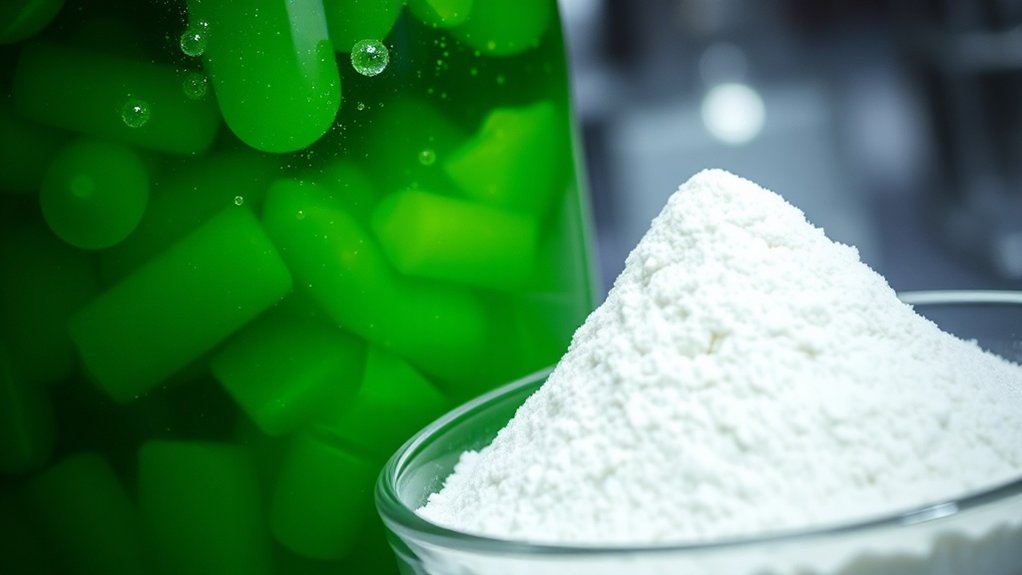
Understanding xanthan gum’s vegan status requires examining its production pathway, which begins with plant-derived glucose—typically from corn, wheat, or soy—serving as the fermentation substrate for *Xanthomonas campestris* bacteria.
During fermentation, these microorganisms metabolize the sugars and secrete a polysaccharide polymer that forms a viscous broth, which manufacturers then precipitate using isopropyl alcohol to separate the gum from the liquid medium.
The precipitated material undergoes drying and milling processes to create the fine white powder you’ll find listed on food labels.
Sugar Sources and Selection
Through bacterial fermentation, manufacturers convert plant-derived sugars into xanthan gum using a well-established industrial process.
You’ll find that corn-derived glucose serves as the primary sugar source for commercial production, though other plant-based carbohydrates can be used.
While lactose from milk theoretically could be used as a fermentation substrate, this practice remains uncommon in the industry.
The predominant reliance on corn and other plant sugars means vegan xanthan gum is standard in today’s market.
When Xanthomonas campestris bacteria consume these sugar sources, they produce the polysaccharide that becomes xanthan gum through subsequent processing steps.
This plant-based ingredient selection guarantees the final product aligns with vegan dietary standards, making it suitable for plant-based formulations across food and industrial applications.
Bacterial Fermentation Mechanics
Once manufacturers select their plant-based sugar source, they introduce it into carefully controlled fermentation tanks alongside Xanthomonas campestris bacteria.
These microorganisms consume the glucose through their metabolic processes, secreting xanthan gum as a natural byproduct. You’ll find that the fermentation environment requires precise temperature and pH monitoring to optimize bacterial growth and maximize production yields—typically around 30 grams of xanthan gum per liter of broth.
After fermentation completes, the resulting viscous mixture undergoes alcohol precipitation using isopropyl alcohol, which separates the gum from the liquid medium.
The precipitated xanthan gum made through this process is then dried and ground into the fine powder you encounter in food products.
This entire bacterial fermentation method relies exclusively on plant-derived sugars and naturally-occurring bacteria, maintaining its vegan-friendly status throughout production.
Drying and Powder Formation
After alcohol precipitation separates the xanthan gum from the fermentation broth, manufacturers must remove all residual moisture to create the stable powder form you’ll find on store shelves.
The drying and powder formation process uses industrial equipment that heats the solidified gum at controlled temperatures, evaporating water while preserving the polysaccharide’s functional properties.
Once dried, the material is produced on machinery that mills it into a fine, uniform powder—typically 80 to 200 mesh particle size. This mechanical grinding guarantees consistent dissolution in liquids and ideal thickening performance.
Throughout these final stages, no animal-derived processing aids are required. The equipment relies solely on heat, air circulation, and mechanical force to transform the dried material into the versatile food-grade powder that maintains xanthan gum’s vegan status.
Why Xanthan Gum Is Considered Vegan by Major Organizations
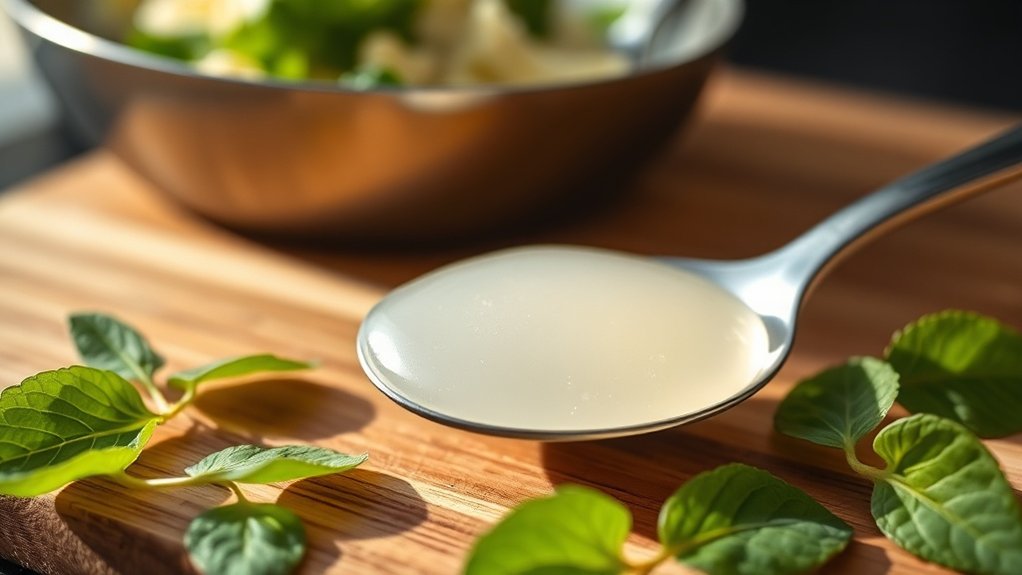
When evaluating xanthan gum’s vegan status, major organizations consistently affirm its plant-based credentials based on modern manufacturing practices.
The Vegetarian Resource Group officially classifies xanthan gum as vegan-friendly, citing the absence of animal-derived ingredients in current production methods. You’ll find this classification supported by FDA oversight, which hasn’t identified any animal-based substances in the manufacturing process.
Manufacturers like Weis Frozen Foods and AEP Colloids have directly confirmed their xanthan gum uses exclusively plant-based enzymes and glucose sources, typically from corn.
While historical patents referenced animal-derived enzymes, you should know that contemporary production has shifted entirely to plant-based alternatives.
This evolution in manufacturing, combined with regulatory transparency and organizational endorsements, establishes xanthan gum’s position as a reliably vegan ingredient across food applications.
Common Uses of Xanthan Gum in Food, Cosmetics, and Pharmaceuticals

Xanthan gum’s versatility extends across multiple industries, where it functions primarily as a thickening, stabilizing, and emulsifying agent.
In food products, you’ll find it in salad dressings, sauces, and baked goods, where it maintains viscosity and improves texture. It’s particularly valuable in vegan ice creams and dairy alternatives, helping emulsify oil and water-based ingredients to create creaminess without dairy. For gluten-free baking, it provides the elasticity and binding properties typically contributed by gluten.
In cosmetics, manufacturers use xanthan gum to create smooth textures in lotions, creams, and serums without animal-derived ingredients.
The pharmaceutical industry relies on it as a binding agent in tablets and as a thickening agent in liquid medications, confirming consistent formulations and effective delivery.
Addressing Misconceptions: Sugar Sources and Bone Char Processing
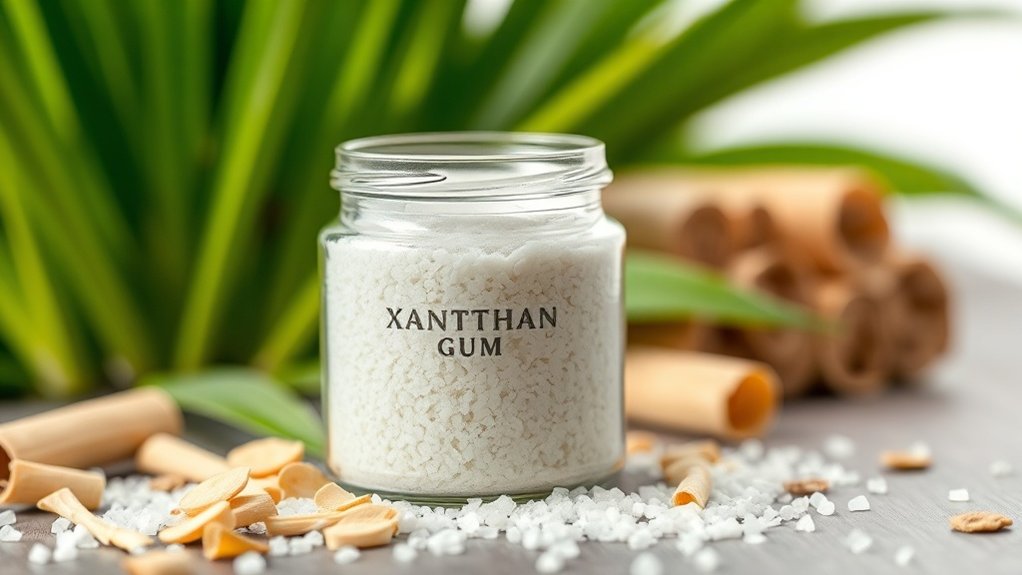
Despite xanthan gum‘s clear plant-based origins, questions persist about whether the sugar sources used in its production compromise its vegan status.
You’ll find that most xanthan gum manufacturers use glucose from corn or plant-based sugars that aren’t processed with bone char, an animal-derived filtering agent sometimes used in sugar refining. Modern production methods prioritize cost-effectiveness and quality, which has naturally shifted the industry toward plant-based processing exclusively.
The fermentation process itself involves Xanthomonas campestris bacteria, requiring no animal-derived ingredients whatsoever.
While historical patents documented animal-based processing methods, current manufacturing standards have eliminated these practices. You can confidently consider xanthan gum vegan, as contemporary production doesn’t involve animal enzymes, by-products, or bone char-refined sugars in the overwhelming majority of cases.
Potential Concerns for Vegans: Cross-Contamination and Allergen Issues
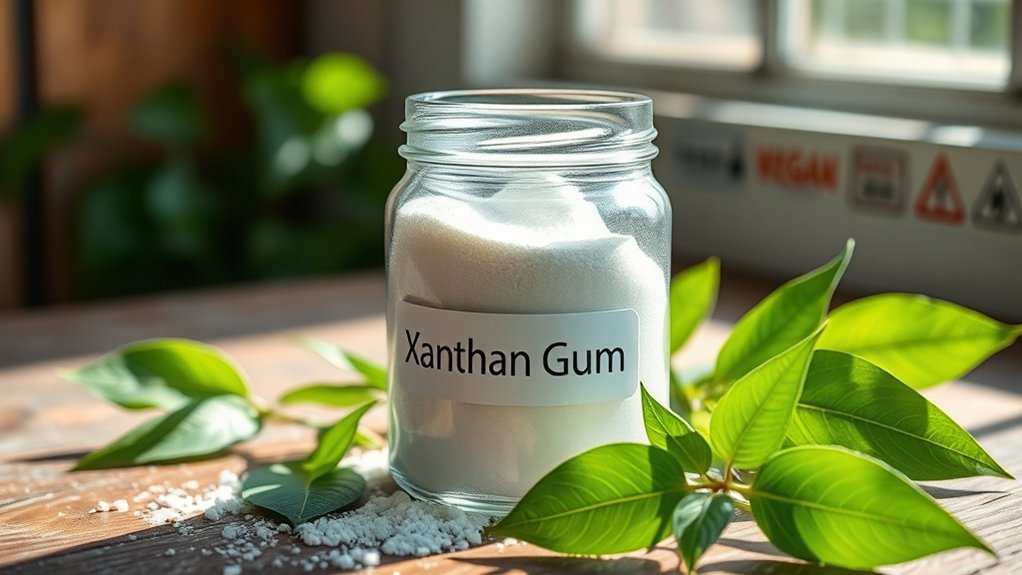
While xanthan gum itself contains no animal-derived ingredients, you’ll need to contemplate cross-contamination risks during manufacturing that may affect your vegan purchasing decisions.
Major suppliers like CP Kelco don’t label their xanthan gum as vegan due to potential cross-contact with egg allergens, despite using only plant-based sugars and bacteria in production.
Key considerations for your vegan choices include:
- Cross-contamination occurs in shared manufacturing facilities, not from animal ingredients in xanthan gum production.
- Companies like Weis Frozen Foods confirm their xanthan gum doesn’t derive from egg whites but caution against vegan claims.
- The Vegetarian Resource Group maintains xanthan gum is generally considered vegan based on current evidence.
You’ll need to determine whether potential allergen cross-contact compromises your personal vegan standards, as manufacturing practices themselves remain animal-free.
Xanthan Gum Vs Other Vegan Thickeners: a Comprehensive Comparison
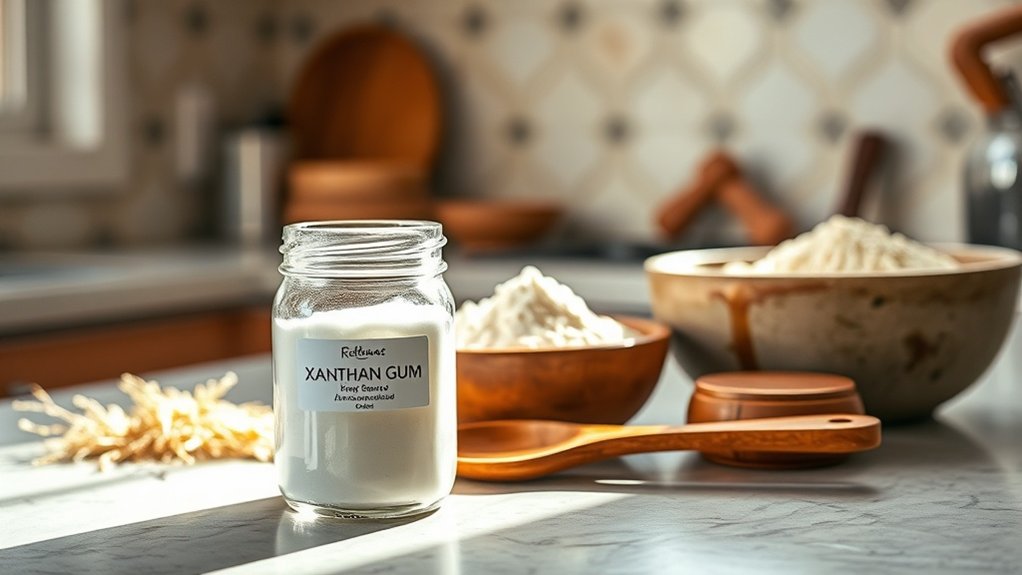
Beyond understanding xanthan gum’s vegan status and manufacturing considerations, you’ll benefit from comparing its functional properties against other plant-based thickeners to make informed dietary choices.
Xanthan gum offers superior versatility across sauces, dressings, and gluten-free baking compared to pectin, which primarily suits jellies and jams.
While guar gum provides higher thickening power, it requires more water for proper hydration.
You’ll find xanthan gum generally well-tolerated digestively, whereas carrageenan—derived from red seaweed—has been linked to gastrointestinal discomfort in some individuals.
For gluten-free applications, xanthan gum excels at binding, though arrowroot and tapioca starch deliver distinct textures depending on your recipe requirements.
When selecting vegan thickeners, consider your specific culinary application, desired texture, and individual digestive tolerance to optimize results.
Health Benefits and Safety Considerations for Vegan Diets
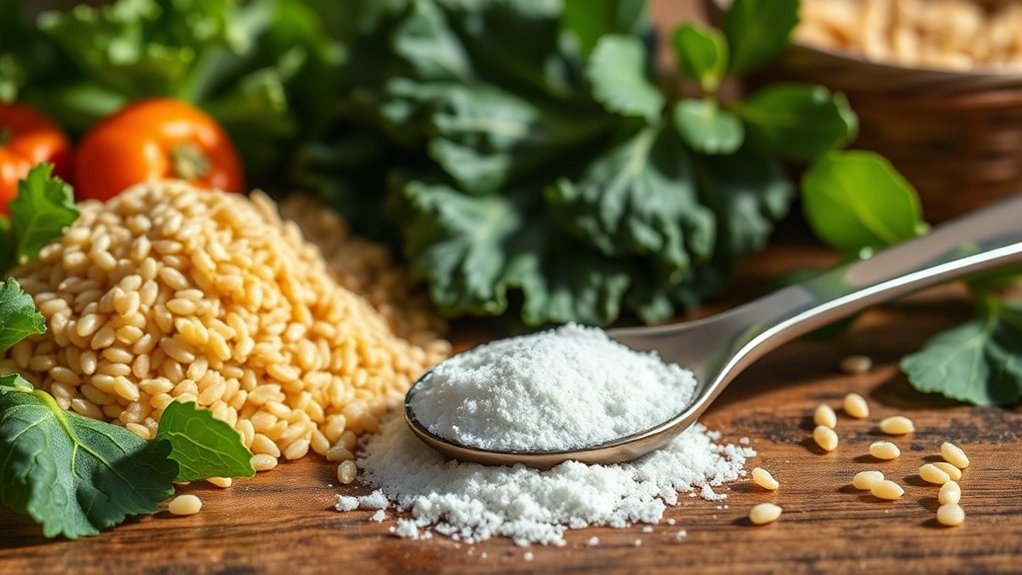
As you incorporate xanthan gum into your vegan diet, you’ll gain access to several evidence-based health benefits alongside minimal safety concerns. This food additive functions as a soluble fiber, supporting digestive health and promoting regular bowel movements to relieve constipation.
Research indicates notable health benefits when consuming 6-10 servings daily:
- Reduced blood sugar levels through slowed glucose absorption
- Lowered cholesterol concentrations in your bloodstream
- Improved satiety with only 4 calories per 2g serving
You’ll find xanthan gum increases plant-based food texture, making vegan alternatives more palatable.
However, practice moderation—exceeding 15g daily can trigger digestive discomfort, including gas and bloating. While this food additive remains generally safe for consumption, maintaining reasonable portions guarantees you maximize benefits without experiencing adverse effects.
How to Use Xanthan Gum in Vegan Cooking and Baking

To successfully incorporate xanthan gum into your vegan cooking and baking, you’ll need to master proper mixing techniques and understand its specific applications across various recipes.
Research indicates that adding xanthan gum slowly while continuously stirring or blending prevents clumping and guarantees uniform distribution throughout your mixture, with ideal concentrations ranging from 0.1% to 1.0% of total weight.
This approach proves particularly valuable in vegan ice creams, gluten-free breads, and plant-based sauces where xanthan gum functions as both a binder and thickening agent to improve texture and stability.
Proper Mixing Techniques
Mastering the proper mixing technique for xanthan gum prevents the frustrating clumps that can ruin your vegan recipes. You’ll achieve ideal results by sifting the powder into liquids while continuously whisking, making sure even distribution throughout your mixture. This technique is especially critical in gluten-free baking, where xanthan gum provides essential structure and elasticity.
For improved dispersion, consider these proven methods:
- Pre-mix xanthan gum with glycerin or glycol before incorporating into water-based liquids
- Blend with dry ingredients first when making baked goods
- Use an immersion blender for dairy-free sauces and ice creams to create a smooth, creamy texture
Start with 0.1% to 1.0% of your total recipe weight—a little goes a long way. This measured approach prevents over-thickening while maintaining the desired consistency in your plant-based creations.
Vegan Recipe Applications
While xanthan gum’s applications in vegan cooking extend far beyond simple thickening, understanding its specific ratios for different recipes guarantees finest results.
In vegan baking, you’ll use it as a gluten substitute, providing essential structure to bread and pastries. For creamy desserts like ice cream or mousse, 2g per serving achieves ideal texture without dairy.
When preparing sauces or dressings, add xanthan gum slowly while blending to emulsify oil and water-based ingredients effectively. For thicker smoothies, sift 0.1% to 1.0% of total weight into your mixture to prevent clumping.
In egg substitutes for quiches or baked goods, it improves binding properties and texture. Starting with minimal amounts allows you to adjust consistency precisely while avoiding excessive viscosity.
